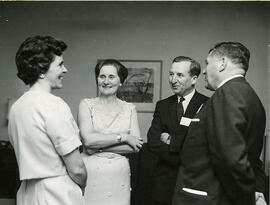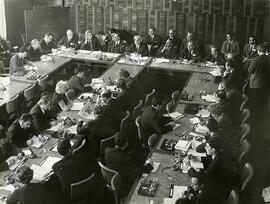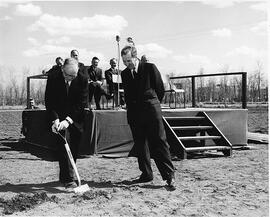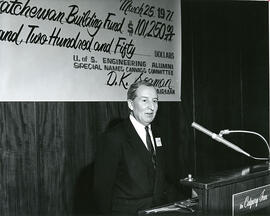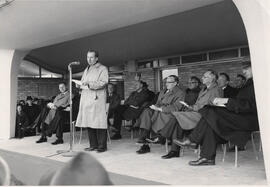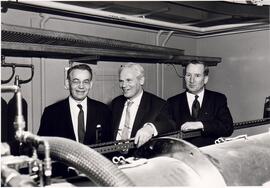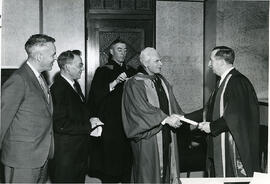- A-8561
- Item
- 1974
Artist Helga Palko discussing her mural with J.W.T. Spinks, University President; A.C. (Colb) McEown (centre) and J.A. Wedgewood, Superintendent of Buildings.
Bio/Historical Note: Helga (or Helen) Palko, born in Austria in 1928, received her MA from the Academy of Fine Arts in Vienna. In 1954 she arrived in Canada and a year later was awarded a scholarship at the California College of Arts and Crafts, Oakland, where she studied enamelling and silver-smithing in 1955-1956. Palko became experienced with several techniques such as cloisonne, painted enamel and champleve - a technique considered to be the finest in craftsmanship. Palko displayed as much variety in her work as in her methods. Aside from enamel dishes, she produced plaques, jewellery, ecclesiastical arts and murals. Two of these murals are located in Saskatchewan; one in St. Peter’s Catholic Church in Lumsden, and the other in the Thorvaldson Building at the University of Saskatchewan. Palko exhibited both inside and outside of Canada: the first National Competitive Woodcarving and Metal Work, "The Brussels International and Universal Exhibition," the XXI Ceramic national, Jewellery 1963 International Exhibition in New York, Expo 67, and Ontario Craftsmen 67, to mention a few.
Palko also participated in several exhibitions organized by the National Gallery of Canada: the First National Fine Crafts Exhibition (1957), the Canadian National Exhibition (1962), where she was awarded the special prize for enamel, and the Canadian Fine Crafts (1966-1967). Palko received the Award of Excellence at the Canadian Design 67 Exhibition. Palko died in 2006 in Brockville, Ontario.



